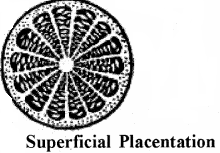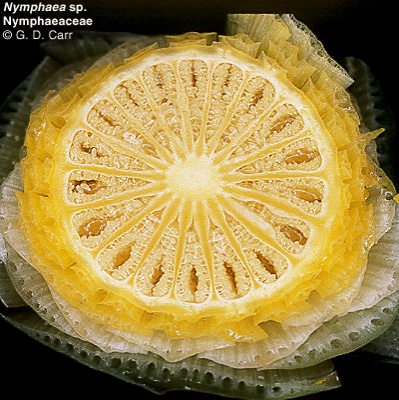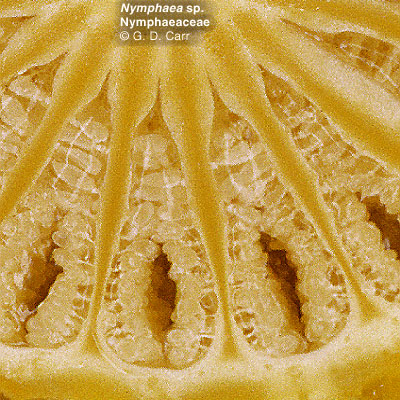It is the most innermost whorl and the female reproductive organ of a flower. It is made up of one or more carpels. Each carpel has three parts – Stigma, Style and Ovary.
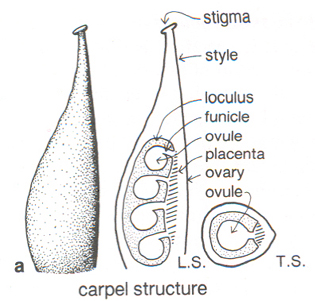
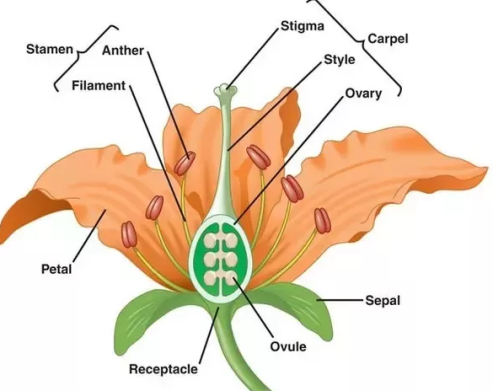
Stigma
It is the topmost part of a carpel. Stigma forms the receptor surface for the pollen grains.
Style
It is the elongated tube that connects stigma and the ovary.
Ovary
- Ovary is the basal swollen part of carpels.
- If an ovary is formed by only one carpel, it is called mono-carpellary pistil. If it is made of two carpels, it is called bi-carpellary pistil. If it is composed of three carpels, it is called tri-carpellary, and so on.
- If the carpels are fused together, it is called Syncarpous, and if they are free, the condition is called Apocarpous.
Placentation
Within the ovary, ovules are developed within a special tissue called the placenta. The mode of arrangement of ovules in the placenta is known as placentation.
There are different kinds of placentation.
Marginal: The placenta is formed along the wall of the ovary, forming a ridge along the ventral suture (opening) of the ovary. The ovules are found in two rows within the placenta. These are usually found in monocarpellary, unilocular ovaries. (e.g. Pisum)
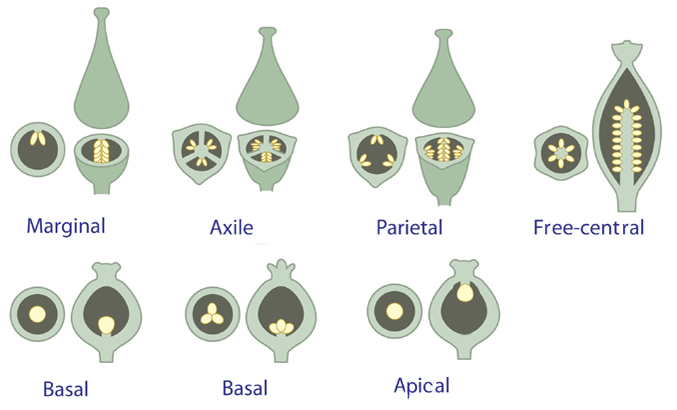

Parietal: The placenta is developed on the peripheral part of the ovary, along the inner wall. It is usually seen in bi-, or multi-carpellary, syncarpous ovaries. (e.g. Cucurbita)
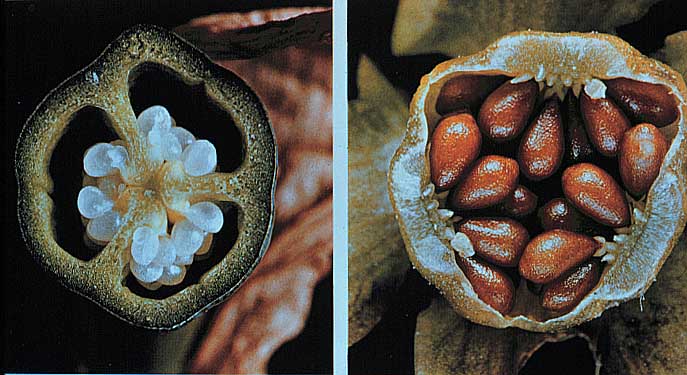
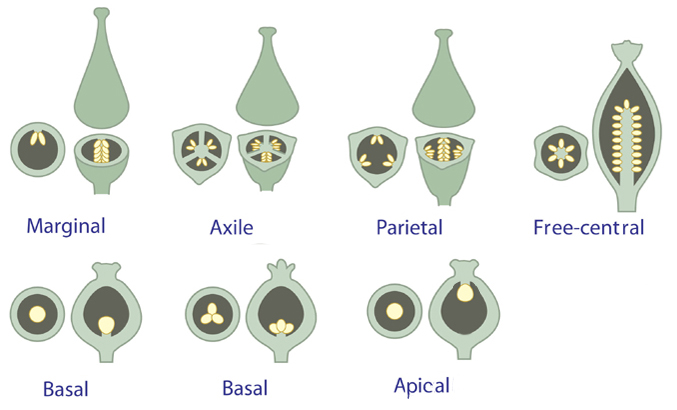
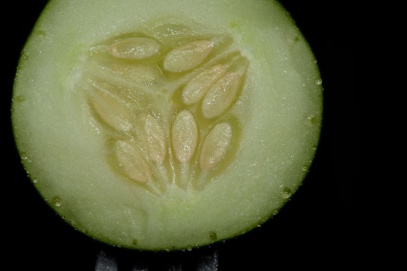
Axile: The placenta is developed in the centre. Hence, the ovules are found around the central axis. It is found in bi- or multicarpellary, syncarpous ovaries. (e.g. Hibiscus)
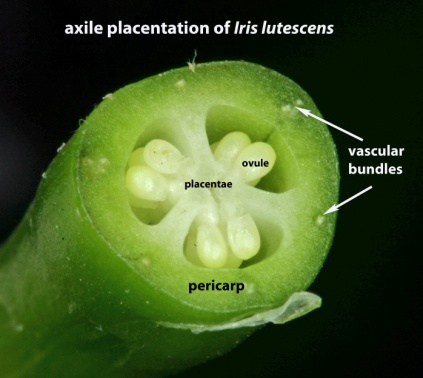
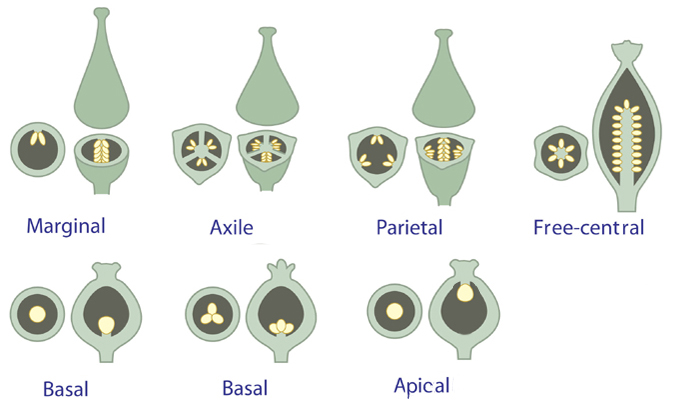
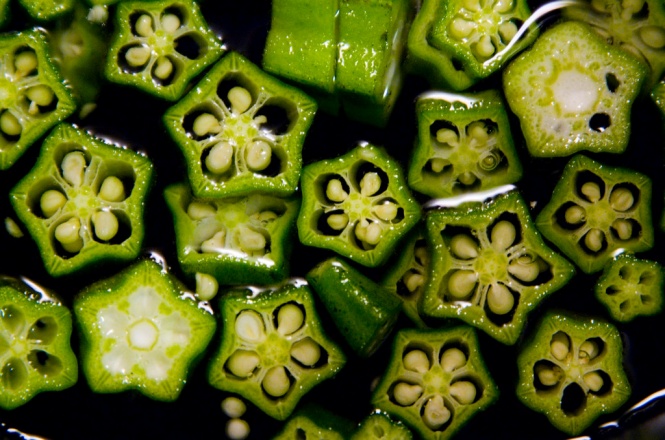
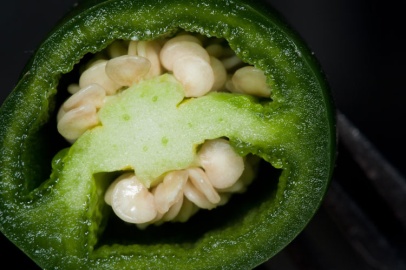
Basal: there is a single placenta at the base of the ovary, with a single ovule. It is usually found in monocarpellary syncarpous ovaries. (e.g. Helianthus)
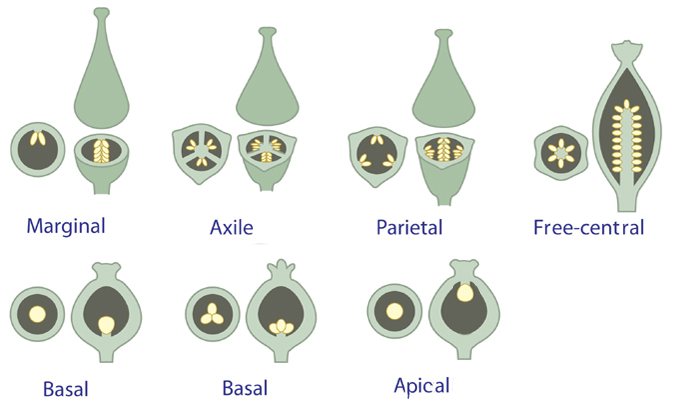
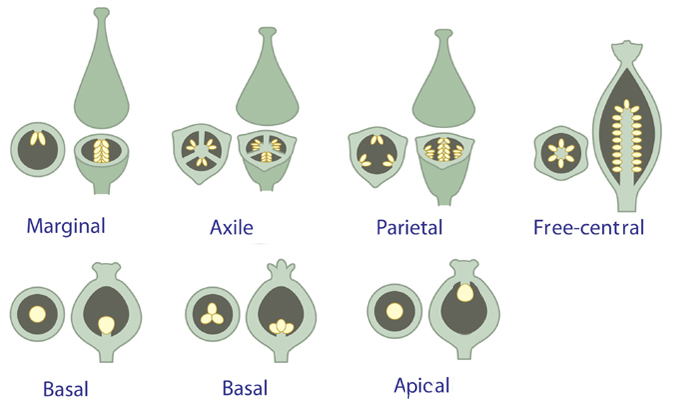
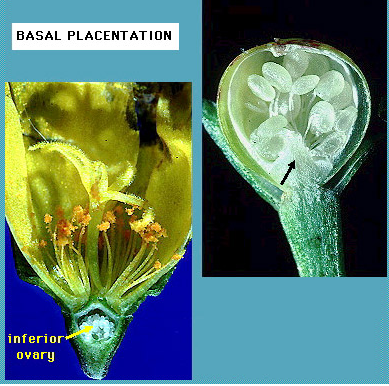
Free central: The ovules are developed around a central column which is not connected to the ovary. (e.g. Dianthus)
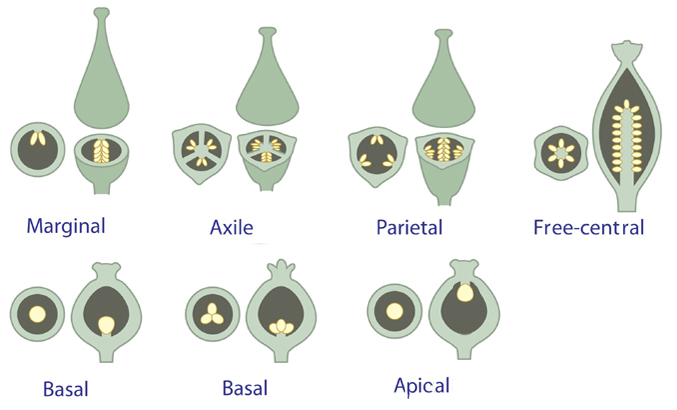
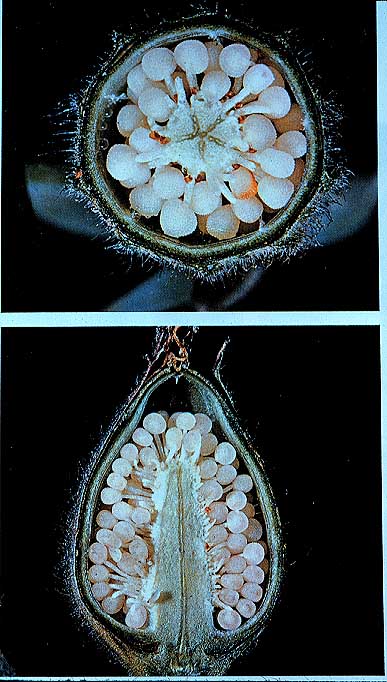
Superficial: The placenta is formed all around the inner surface of the ovary including the septa.
